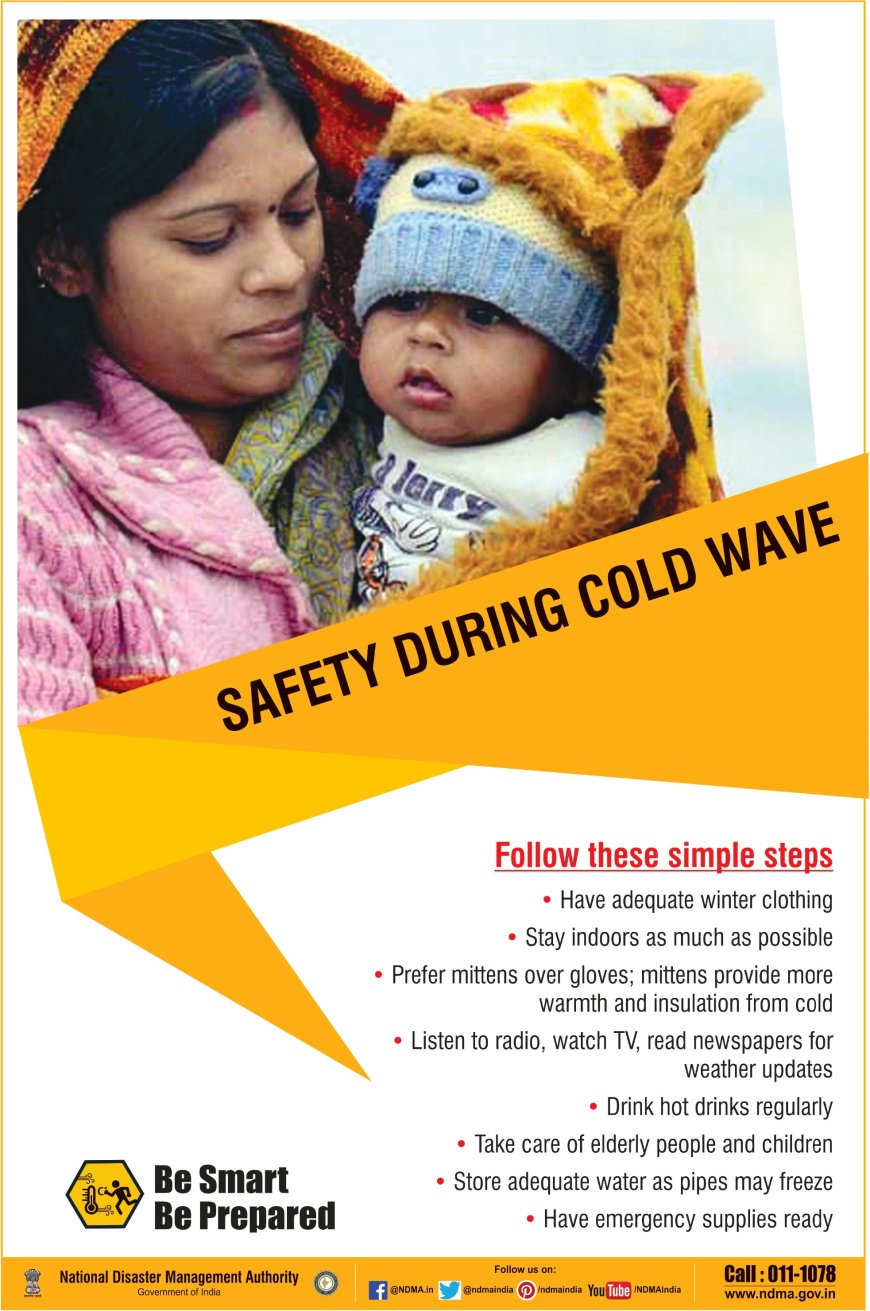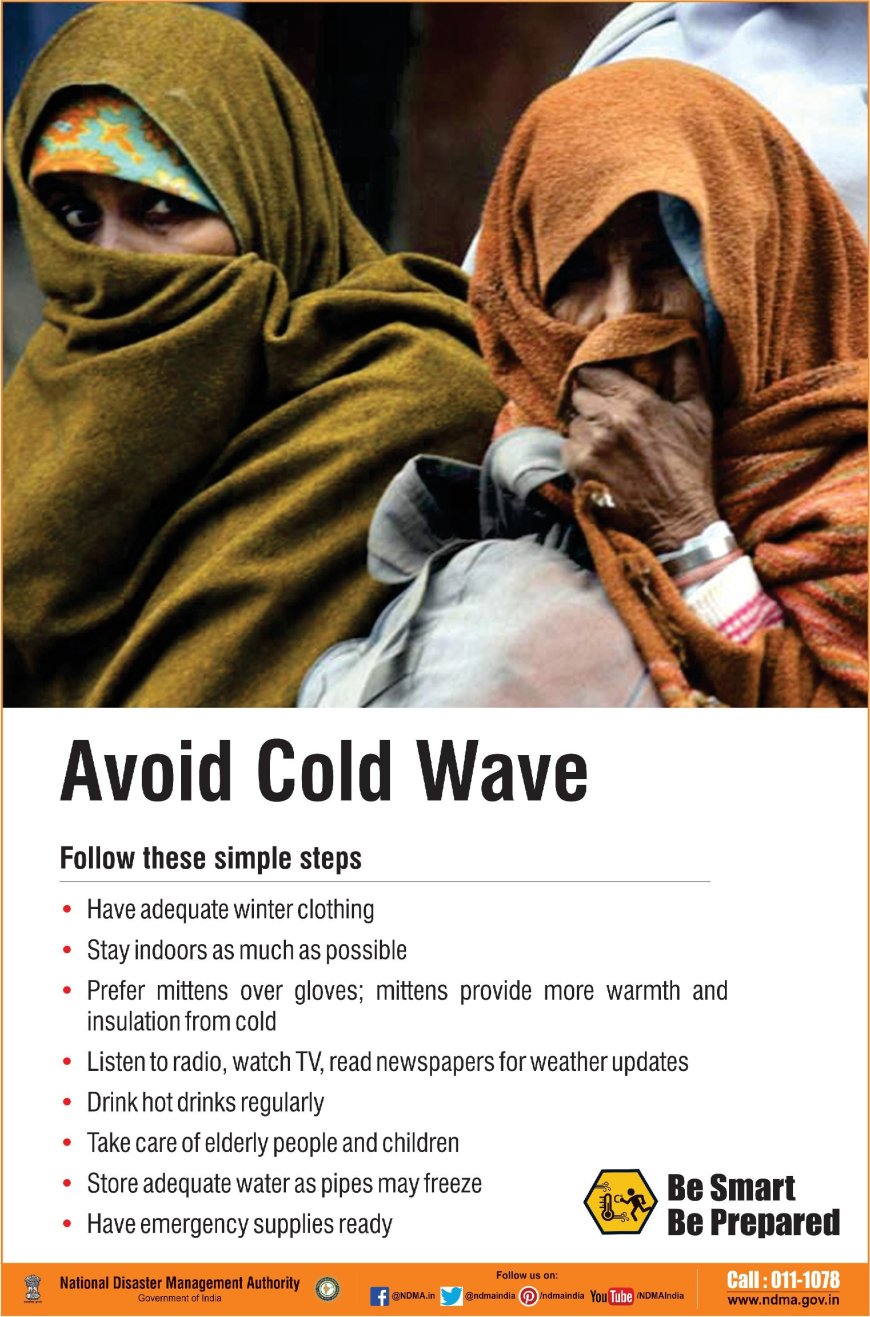Aapda Samvaad - National Disaster Management Authority (NDMA) - Cold Wave
Cold waves are unusual weather occurrences caused by extremely low temperatures in the near-surface atmosphere. Their duration can range from several days to a few weeks, contingent upon the geography and climatic conditions of the region. Qualitatively, a Cold wave is a condition of air temperature which becomes fatal to the human body when exposed
Cold Waves and its Management in India
Cold waves can pose serious risks, so managing cold waves involves staying informed through improved weather forecasts, better communication of risks to the public, ensuring proper insulation, using heating safely, dressing warmly, developing more
insulated and weather-resistant materials for buildings, and enhanced strategies for providing emergency shelter and support to vulnerable populations during extreme cold events. and checking on vulnerable individuals like the elderly or those without
shelter. It's crucial to have emergency plans in place and access to warm shelters during severe cold waves. The following are some important dimensions of cold wave management:
1. Preparedness and Planning: Development of emergency response plans, identification of vulnerable populations, establishment of shelters, and coordination among various agencies and organizations to ensure a swift and effective response.
2. Infrastructure and Technology: Implementation of heating technologies, energyefficient insulation, cold-resistant materials in construction, and monitoring systems for early detection and mitigation of cold-related risks.
3. Public Awareness and Communication: Effective dissemination of information regarding risks associated with cold waves, safety measures, and instructions on how to stay warm and protect oneself during extreme cold conditions.
4. Emergency Response and Support: Deployment of resources, including emergency shelters, medical assistance, and support services for vulnerable populations, and continuous monitoring of the situation to adapt responses as needed.
5. Post-event Evaluation and Learning: Analysis of response efforts, identification of strengths and weaknesses, and integration of lessons learned to improve future cold wave management strategies.
What's Your Reaction?






















































